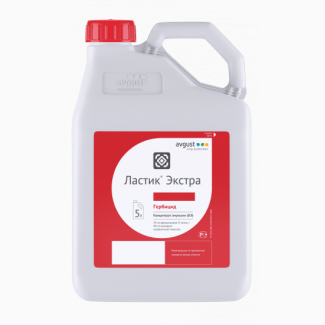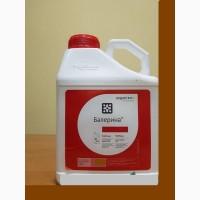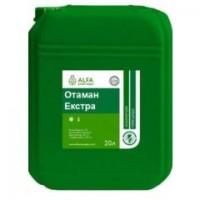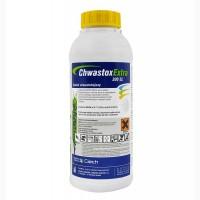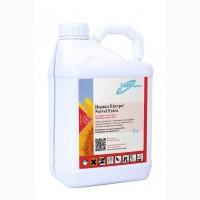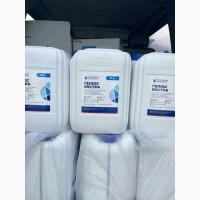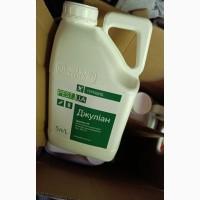/ Fertilizers and plant protection products / Herbicides / Lastik Extra - herbicide for combating...
Sell / buy
Lastik Extra - herbicide for combating annual cereal weeds in grain crops, Kyiv region.
Price28$
Region:all Ukraine,
Kyiv region.
(Vyshhorodok)
Updated:
Lastik Extra - Selective herbicide for combating annual cereal weeds in barley and wheat crops.
Active ingredients: antidote cloquintoset-mexyl 40 g/l, fenoxaprop-P-ethyl 70 g/l.
Preparative form: emulsifiable concentrate.
Crops: Winter wheat, Spring wheat, Spring barley.
Manufacturer: August
Container: 5 liter canister, the price is for 1 liter.
Advantages of the drug:
effective control of all annual grass weeds;
complete culture selectivity due to the presence of an antidote;
application regardless of the phase of culture development;
compatibility with herbicides against dicotyledonous weeds.
Purpose: selective systemic herbicide for the control of annual cereal weeds ingrain crops.
Characteristics of the active substance:
fenoxaprop-P-ethyl belongs to the chemical class of derivatives of 2 - (4-aryloxyphenoxy) propionic acids.
Range of action:
annual grass weeds - sedge (species), tonkoleg (species), foxtail field, chicken millet, hairy millet, seed millet, mouse (species), aegilops (species), blood dew, multi-flowered weed, carrioncorn and others.
Mechanism of action:
the drug penetrates the weed through the leaves and spreads in it, accumulating at the growth points. The active substance of the herbicide is rapidly hydrolyzed to form free fenoxaprop acid, which inhibits the biosynthesis of fatty acids in meristem tissues. As a result, the formation of cell membranes at growth points stops. The antidote accelerates the process of specific detoxification of the active substance in wheat and barley plants, turning it into neutral metabolites that do not have a negative effect on crops.
Speed and symptoms of exposure:
the herbicide quickly penetrates the leaves of the weeds, and after a day they stop competing with the crop. Complete dying of grass weeds takes 10-15 days or more, depending on weather conditions. The most rapid herbicidal effect is achieved when processing in the early phases of weed development (phase 2 - 3 leaves) and at optimal humidity and temperature for their growth. Chlorosis appears on young weed leaves, growth points are inhibited, anthocyanin coloration of leaves is observed in some types of weeds.
Period of protective action:
after processing, the weeds on which the drug got into die off, and the area is free of them for 3-4 weeks. Lastik™ Extra has no effect on those weeds that appeared later, already after spraying (the second "wave"), but they no longer pose a significant danger to uprooted grain crops.(//tractor-service.com)
Selectivity:
grain crops show a fairly high resistance to the herbicide (within the recommended norms) in all phases of growth during the growing season, so the treatment period is determined by the phase of weed growth.
Phytotoxicity: not phytotoxic if the regulations of use are observed.
The possibility of the emergence of resistance: no cases of emergence of resistance to the drug have been identified in the recommended regulations of use.
Waiting period: 60 days.
Multiplicity of processing: one-time processing is allowed.
Recommendations for use:
Culture - Rate of consumption of the drug,
l/ha - Weeds
= Spring wheat, winter wheat, spring barley
0.8 - 1
Annual grass weeds (types of sedge, common plantain, seed millet, ovsyug, common ragwort, etc.)
Crops are processed once in the early phases of weed development (2-3 leaves), regardless of the phase of crop development (taking into account the sensitivity of varieties). On winter wheat, the drug is used in the spring. Lastik™ Extra can be used from the 2nd leaf phase to the end of tillering, and if necessary - to the 2nd weed node phase. Thus, both early and late crop treatments can be carried out. It is very important to correctly choose the term of herbicide application (mass appearance of annual grass weeds), as the drug penetrates the plant through the leaves and does not affect the second "wave" of weeds that appeared after spraying.
Preparation of working solution:
with ground spraying, the working solution is prepared immediately before spraying. Measure the required amount of the drug for one filling of the sprayer. Next, the working solution is prepared as follows. Before preparing the working solution, the mother solution is first prepared, and its concentration should not exceed 20%, that is, 5 liters of water must be used for each liter of the drug. Next, the tank of the sprayer is filled approximately half with water, the mother solution of the herbicide is poured into it, water is added to the full volume and the solution is mixed with hydraulic stirrers. At the same time, the container in which the mother liquor was prepared is washed several times with water and poured into the tank of the sprayer. The working solution of the herbicide and the filling of the sprayer with it are carried out on special sites, which are then subjected to decontamination. Ground rodsprayers mass-produced, equipped with slotted tips designed for applying herbicides.
Compatibility: the drug can be used in tank mixtures with herbicides against dicotyledonous weeds (for example, Ballerina®, etc.). However, in each case it is necessary to check the chemical compatibility of the components to be mixed. When preparing tank mixtures, direct mixing of drugs without prior dilution with water should be avoided.
It is necessary to mix the drugs in the tank of the sprayer in the following order: ZP (in water-soluble bags) → ZP → VG → KS → SE → KE (ME) → RG → RK → PAR. Each subsequent component is added after complete dissolution (dispersion) of the previous one.
Consumption of working fluid: 200 - 300 l/ha.
Active ingredients: antidote cloquintoset-mexyl 40 g/l, fenoxaprop-P-ethyl 70 g/l.
Preparative form: emulsifiable concentrate.
Crops: Winter wheat, Spring wheat, Spring barley.
Manufacturer: August
Container: 5 liter canister, the price is for 1 liter.
Advantages of the drug:
effective control of all annual grass weeds;
complete culture selectivity due to the presence of an antidote;
application regardless of the phase of culture development;
compatibility with herbicides against dicotyledonous weeds.
Purpose: selective systemic herbicide for the control of annual cereal weeds ingrain crops.
Characteristics of the active substance:
fenoxaprop-P-ethyl belongs to the chemical class of derivatives of 2 - (4-aryloxyphenoxy) propionic acids.
Range of action:
annual grass weeds - sedge (species), tonkoleg (species), foxtail field, chicken millet, hairy millet, seed millet, mouse (species), aegilops (species), blood dew, multi-flowered weed, carrioncorn and others.
Mechanism of action:
the drug penetrates the weed through the leaves and spreads in it, accumulating at the growth points. The active substance of the herbicide is rapidly hydrolyzed to form free fenoxaprop acid, which inhibits the biosynthesis of fatty acids in meristem tissues. As a result, the formation of cell membranes at growth points stops. The antidote accelerates the process of specific detoxification of the active substance in wheat and barley plants, turning it into neutral metabolites that do not have a negative effect on crops.
Speed and symptoms of exposure:
the herbicide quickly penetrates the leaves of the weeds, and after a day they stop competing with the crop. Complete dying of grass weeds takes 10-15 days or more, depending on weather conditions. The most rapid herbicidal effect is achieved when processing in the early phases of weed development (phase 2 - 3 leaves) and at optimal humidity and temperature for their growth. Chlorosis appears on young weed leaves, growth points are inhibited, anthocyanin coloration of leaves is observed in some types of weeds.
Period of protective action:
after processing, the weeds on which the drug got into die off, and the area is free of them for 3-4 weeks. Lastik™ Extra has no effect on those weeds that appeared later, already after spraying (the second "wave"), but they no longer pose a significant danger to uprooted grain crops.(//tractor-service.com)
Selectivity:
grain crops show a fairly high resistance to the herbicide (within the recommended norms) in all phases of growth during the growing season, so the treatment period is determined by the phase of weed growth.
Phytotoxicity: not phytotoxic if the regulations of use are observed.
The possibility of the emergence of resistance: no cases of emergence of resistance to the drug have been identified in the recommended regulations of use.
Waiting period: 60 days.
Multiplicity of processing: one-time processing is allowed.
Recommendations for use:
Culture - Rate of consumption of the drug,
l/ha - Weeds
= Spring wheat, winter wheat, spring barley
0.8 - 1
Annual grass weeds (types of sedge, common plantain, seed millet, ovsyug, common ragwort, etc.)
Crops are processed once in the early phases of weed development (2-3 leaves), regardless of the phase of crop development (taking into account the sensitivity of varieties). On winter wheat, the drug is used in the spring. Lastik™ Extra can be used from the 2nd leaf phase to the end of tillering, and if necessary - to the 2nd weed node phase. Thus, both early and late crop treatments can be carried out. It is very important to correctly choose the term of herbicide application (mass appearance of annual grass weeds), as the drug penetrates the plant through the leaves and does not affect the second "wave" of weeds that appeared after spraying.
Preparation of working solution:
with ground spraying, the working solution is prepared immediately before spraying. Measure the required amount of the drug for one filling of the sprayer. Next, the working solution is prepared as follows. Before preparing the working solution, the mother solution is first prepared, and its concentration should not exceed 20%, that is, 5 liters of water must be used for each liter of the drug. Next, the tank of the sprayer is filled approximately half with water, the mother solution of the herbicide is poured into it, water is added to the full volume and the solution is mixed with hydraulic stirrers. At the same time, the container in which the mother liquor was prepared is washed several times with water and poured into the tank of the sprayer. The working solution of the herbicide and the filling of the sprayer with it are carried out on special sites, which are then subjected to decontamination. Ground rodsprayers mass-produced, equipped with slotted tips designed for applying herbicides.
Compatibility: the drug can be used in tank mixtures with herbicides against dicotyledonous weeds (for example, Ballerina®, etc.). However, in each case it is necessary to check the chemical compatibility of the components to be mixed. When preparing tank mixtures, direct mixing of drugs without prior dilution with water should be avoided.
It is necessary to mix the drugs in the tank of the sprayer in the following order: ZP (in water-soluble bags) → ZP → VG → KS → SE → KE (ME) → RG → RK → PAR. Each subsequent component is added after complete dissolution (dispersion) of the previous one.
Consumption of working fluid: 200 - 300 l/ha.
|
Store, contacts | |
Yuriy / feedback, info. / evaluation activities | |
|
Phone:
+38(xxxxxx
show
| |
All ads user ~1000 | |
Ad ID: #1166319
(added by registered user, registration date: 2016-08-10)
Added / Updated: 2016-10-15 09:17 (current, until: 10-15-2026)
Permanent Ad Address:
Impressions / views for today: ?, total: ?
Similar ads
Among them there are many interesting ones...
